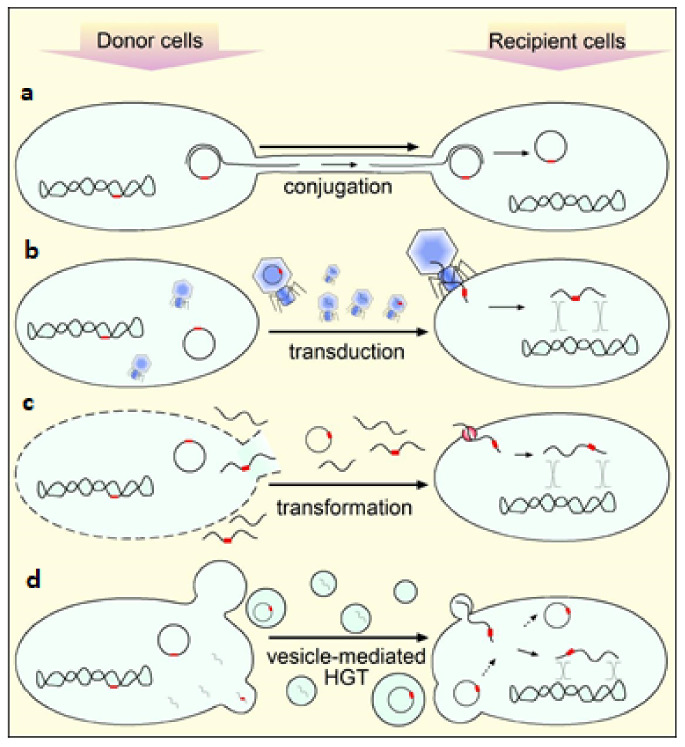Figure 6.
Genetic determinants of antibiotic resistance, including resistance to quinolones, can be horizontally transferred by four mechanisms. (a) Conjugation-mediated HGT depend in the presence of a fertility plasmid (plasmid F) in the donor bacteria, plasmid F encodes the functions to form and mobilize F plasmid through a sexual pili. In some cases, chromosomal DNA can be also transferred. (b) Transduction is the transfer of DNA mediated by bacteriophages, viruses that infect bacteria. Occasionally, the viral capsid may encapsulate bacterial DNA and transduce it into a recipient bacterium. Transduced DNA can be incorporated by homologous recombination or other mechanisms. In addition, viral DNA can be integrated to start forming part of bacterial chromosome. (c) Transformation is the uptake of DNA directly from the surrounding environment. Some bacteria are naturally competent and internalize DNA that can be integrated to their genetic patrimony by mechanism such as recombination. (d) Vesicle mediated gene transfer is the newer mechanism found to be involved in HGT. It involves formation of vesicles that may include plasmidial or fragments of chromosomal DNA. The vesicles fuse to membranes and fade into recipient cells. Vesicle-transported DNA can be a plasmid or a fragment of DNA that might recombine with the chromosome of recipient bacterial cells. Vesicle mediated HGT was extensively reviewed by Domingues and Nielsen 2017 [328]. Figures were drawn from scratch using Freehands 10 (Macromedia, San Francisco, CA, USA).

